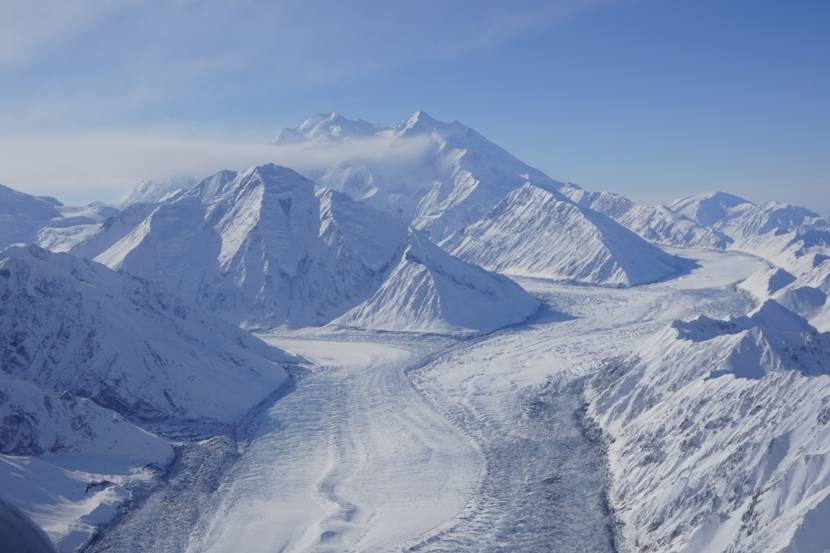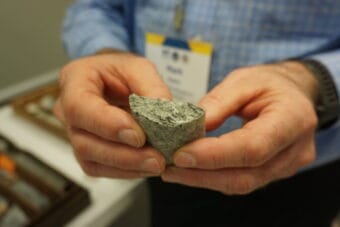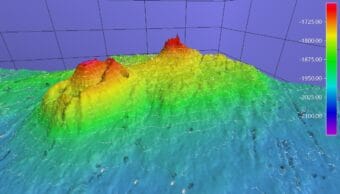
The 34-mile-long Muldrow glacier is the largest on the north side of the Alaska Range. It’s visible from part of the road into Denali National Park, but that view is changing as it surges downslope toward the McKinley River — a sudden acceleration that’s happening for the first time in over 60 years.
Denali National Park scientist Dave Schirokauer recently flew onto the glacier, and he said the surge has churned up its surface.
“The edges of the glacier — the interface between the valley, the bedrock and then the ice — is completely broken up. There’s giant chunks of ice thrown off to the side,” he said
The glacier is moving about 20 meters per day right now, over 100 times faster than its non-surge speed of 16 centimeters a day. The last time the Muldrow glacier surged was in 1956-57, when it advanced over 4 miles in a few months, leaving behind a now dirt-and-vegetation-covered area of ice.
“Right now the toe of the glacier is pushing into that old, stagnant ice, so it might break that up and be a pretty dramatic change in the scenery,” Schirokauer said.
The glacier’s non-surge speed was originally measured by famed mountaineer Bradford Washburn back in 1976.
“He deserves some credit here because he is the only person that measured the rate of movement on the glacier during its quiet phase, so that reference condition that he captured in 1976 is awesome right now,” Schirokauer said. “We have a story to tell about how fast it normally goes and how fast the ice is moving during the surge.”
Before Washburn established the West Buttress as the preferred route to climb Denali, the Muldrow was the most popular path for mountaineers, and it’s still attempted by a few each year. But Schirokauer said the surge has made it impassable.
“There were a couple of parties that were planning on using the Muldrow as their climbing route in attempting the summit this year, and those folks are being encouraged to change their plan. My hunch is that the historic route on the Muldrow won’t be climbable for many years to come,” he said.
According to an NPS release, surging glaciers are rare in the world, but Denali’s extreme topography makes them more common around the peak. Schirokauer says the Muldrow appears to operate on a roughly 50-year surge cycle dictated by a few factors, like “he geometry of the glacier, the underlying bedrock, and its internal hydrology.”
The surge is expected to end with a large release of water in June.
“[There’s] potential for a very intense outburst flood because there’s just masses of water trapped under that glacier to lubricate that surface to the extent where it can surge at this rate,” Schirokauer said. “The reason the surge ends is because that trapped water finds a path out.”
Schirokauer said the water will flood the McKinley River but is not expected to impact any populated areas, which are far downstream.
The Muldrow surge is being closely monitored by scientists and an array of instruments deployed on and along the glacier.
“You have a soundscape station out there on the edge, and we have time-lapse cameras and the whole story is on our brand new Muldrow surging glacier website,” Schirokauer said.
He said the Park Service hopes to begin uploading real-time images of the Muldrow glacier’s surge.



